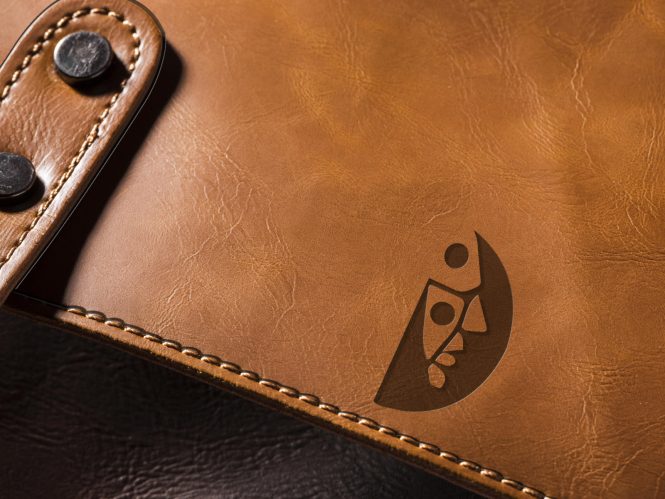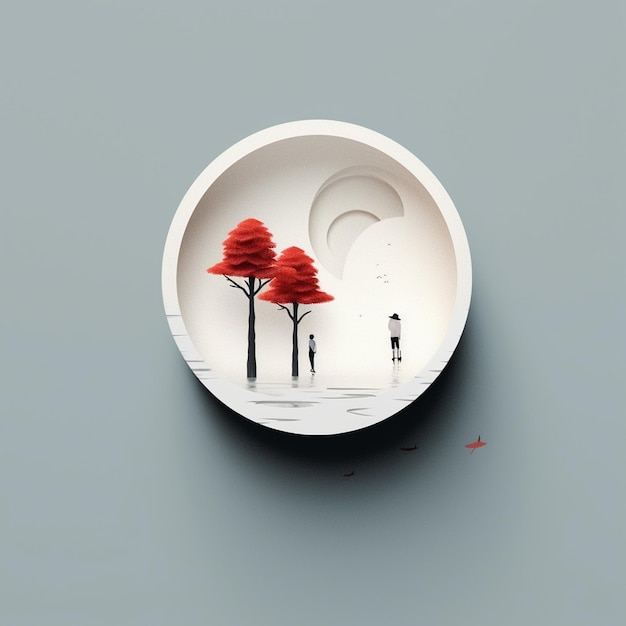

Negative space, often overlooked, is a cornerstone of minimalist design. It’s more than just empty space; it’s a deliberate element used to create visual hierarchy, balance, and a sense of serenity in minimalist designs. This article explores the essential role of negative space in minimalist design and how designers can effectively use it. We’ll examine how it contributes to visual interest, understand its importance in achieving visual balance, and demonstrate how it helps create a unique minimalist aesthetic that resonates with viewers. We’ll delve into practical applications and strategies, illustrating the concept with examples and real-world applications. Through examples and strategies, we will equip you with the knowledge to harness negative space in your own minimalist design projects.
Understanding the Concept of Negative Space
Defining Negative Space
Negative space, sometimes called white space, is the empty or unused area around, between, or within visual elements of a design. In minimalist design, this seemingly empty space is not merely blank canvas; rather, it’s a strategic tool that contributes significantly to the overall aesthetic. Its careful manipulation can dramatically impact how the design is perceived and interpreted.
The Power of Visual Hierarchy
Negative space is instrumental in establishing visual hierarchy in a design. Elements that require more emphasis can be framed by negative space, naturally drawing the viewer’s eye and highlighting the intended focus of the design. This careful arrangement of negative space around key elements helps to create a clear and impactful visual experience. By focusing attention on certain areas, we can guide the viewer through the design, emphasizing specific aspects as intended. The careful use of negative space in minimalist design creates a visual rhythm, directing the user’s gaze and enhancing the overall aesthetic experience.
Balancing Visual Elements
Negative space plays a vital role in balancing visual elements in a minimalist design. It’s a powerful tool to create visual harmony and equilibrium. A minimalist approach often involves carefully contrasting elements of positive space with the well-defined negative space, allowing for an appealing and uncluttered design. A well-distributed negative space can lead to a more intuitive and less stressful user experience. This careful juxtaposition helps to avoid visual clutter and makes the design feel more sophisticated and refined.
Enhancing Aesthetic Appeal
Minimalist designs often emphasize simplicity and elegance. Negative space contributes significantly to this aesthetic. By using negative space strategically, designers can create a sense of openness, spaciousness, and refinement in their work. This visual approach helps to convey a feeling of tranquility, helping audiences to perceive the design in a better way.
Practical Applications of Negative Space in Minimalist Design
Example in Web Design
Consider a website with a simple layout. Large blocks of white space around key elements like buttons and navigation menus will allow those elements to stand out, drawing the user’s attention to the critical components of the site. This type of layout also creates a sense of spaciousness and elegance. A well-executed use of negative space can greatly contribute to a user-friendly website experience. Consider how Airbnb or Booking.com utilize this strategy.
Example in Graphic Design
In graphic design, negative space can be used to create compelling visual shapes and forms. This can also be seen as an element that can influence the visual weight and balance of the design. Using negative space strategically can create a more intriguing design and capture the attention of the viewer more effectively. Think of the iconic logo for the Apple company, which effectively leverages negative space to create a recognizable and impactful image.
Example in Product Packaging
Negative space in product packaging can be a powerful tool for highlighting the product itself. By using the empty space surrounding the product or logo to focus attention on the item, designers create a minimalist effect. This effect gives a visually appealing presentation and creates a desire to approach the item. This technique can be seen on numerous product packaging for high-end goods.
The Impact on User Experience
Improving Accessibility and Readability
Negative space plays a key role in improving the readability of text and overall accessibility. By distributing negative space around text elements or images, we create visual breathing room. This improves readability and allows users to focus on the content. The user can navigate the design more smoothly and intuitively. This layout can be essential for individuals with visual impairments or those who simply prefer a less cluttered design.
Creating a Sense of Calm and Order
Minimalist designs often aim to evoke a sense of calm and order. The use of negative space contributes significantly to this effect. It helps to eliminate visual noise and create a space that is easier to understand and process. This aesthetic creates a positive and tranquil atmosphere.
Elevating Brand Identity
Negative space can help designers elevate the overall brand identity of a product or service. By using negative space in a consistent manner throughout a range of marketing materials, businesses can craft a recognizable visual language. Consistency builds brand recognition and provides a distinct personality. Think about how Nike, or other high-profile companies, utilize negative space to enhance their brand image.
Beyond the Basics: Advanced Techniques
Using Negative Space to Create Shapes and Forms
Negative space can be a creative tool for generating shapes and forms. The emptiness around objects can itself become part of the design. This allows for a greater visual diversity in a minimalistic design, pushing the boundaries of the design space. The technique can make the design more engaging, inviting viewers to focus and perceive the entire design.
Creating Visual Interest
Negative space can be used to create intriguing shapes and forms in a minimalist design. This creates an opportunity to make the design more complex, yet visually engaging. By drawing the viewer’s attention through strategic use of the negative space, the design can create a better understanding of the product, service, or concept being portrayed.
Creating Contrast
Negative space can be used to highlight the positive space elements of a design. By contrasting the space between elements, the designer can draw attention to essential elements. A well-placed negative space can enhance the visual interest and create a stronger sense of visual hierarchy.
Case Studies and Examples
Apple’s Minimalist Approach
Apple’s designs are a prime example of negative space’s effectiveness. The simplicity and clean lines, combined with the deliberate use of negative space, create a sense of elegance and sophistication in their products. The use of negative space results in a clear, concise aesthetic, ensuring that users do not feel overwhelmed by a barrage of elements, thus simplifying the overall use experience.
Modern Web Design Trends
Many modern websites and apps utilize negative space to enhance readability and usability. The clean, uncluttered approach allows users to easily find and interact with the most important elements. This helps in creating a more engaging and streamlined user experience.
The Impact of Minimalist Packaging
Negative space can be very effective in minimalist packaging. Companies are using negative space to create visually appealing and uncluttered packaging. This allows for the product itself to stand out without relying on unnecessary visual clutter. This approach focuses attention on the product itself.
In conclusion, negative space plays a crucial role in minimalist design, acting as a powerful tool for visual hierarchy, balance, and a sense of serenity. By understanding its applications and principles, designers can create visually appealing and impactful minimalist pieces. Experiment with negative space in your own projects to explore its nuances and unlock its potential for enhancing your design. Learn more about minimalist design techniques through online courses or workshops, and start creating compelling designs today!